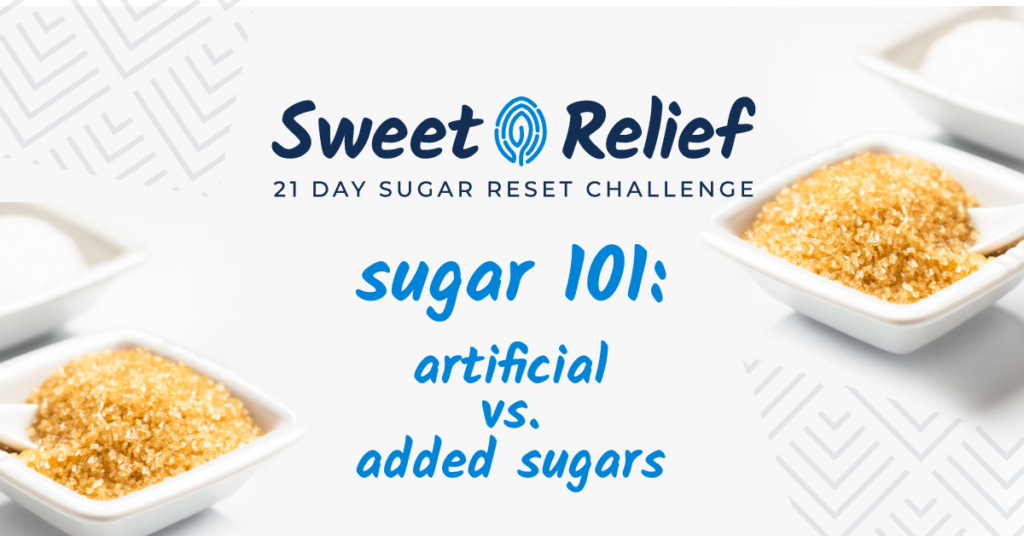


Sugar comes in many different forms but all fall under three major categories: natural sugars, added sugars, and artificial sugars. But are they all the same?
We’re breaking down exactly what you need to know about the types of sugar:
natural sugars
These sugars are naturally occurring – not added into any foods. Whole foods like fruits, vegetables, and dairy all contain natural sugars. However, it’s accompanied with fiber, vitamins, and minerals that provide health promoting benefits.


added sugars
Remember our handy list of common sugar names to look out for? They’re all considered as added sugars. These are sugars removed from their natural forms and added back into food products. Many packaged foods contain added sugars that provide little nutritional benefits compared to foods with natural sugars which are high in vitamins and minerals.
artificial sugars
Artificial sweeteners provide the sweetness of sugar without extra calories, often in the form of sugar alcohols that the body does not digest as regular sugar. However, consuming artificial sugars can still trick your body to think that it’s eating sugar and feed into the same cravings for sweets. Some are made to mimic sweetness up to 100x more than other forms of added sugars! Over-consuming artificial sugars or sugar alcohols can also lead to stomach cramps or gastrointestinal distress for some.

While they are classified as safe by the FDA, it’s still a good idea to reduce your overall intake. Common artificial sweetener examples include splenda, equal, aspartame, sucralose, and saccharine.
key takeaways
To completely reset during these 21 days, we highly encourage you to reduce your added sugar intake – and that includes artificial sugars. This will help reset your taste buds so it’s less desensitized to all forms of sugar.
The general advice on sugar from our dietitian? If you’re eating mostly whole foods, then natural sugars should be the least of your worries. During this reset, aim for 2-3 servings max when you feel like eating something sweet. When it comes to fruit, just watch out for the dried versions – they sometimes contain extra added sugar as a preservative. Between fruit and fruit juice, it’s often a better choice to opt for the whole fruit since it contains extra fiber to slow down the absorption of sugar in our bloodstream.
Remember, sugar itself is not bad – it becomes an issue when it’s over consumed, especially if it’s in the form of added sugars. Being mindful of how much added sugars – both regular and artificial hidden in common food items is a helpful way to regulate the amount consumed over time.

